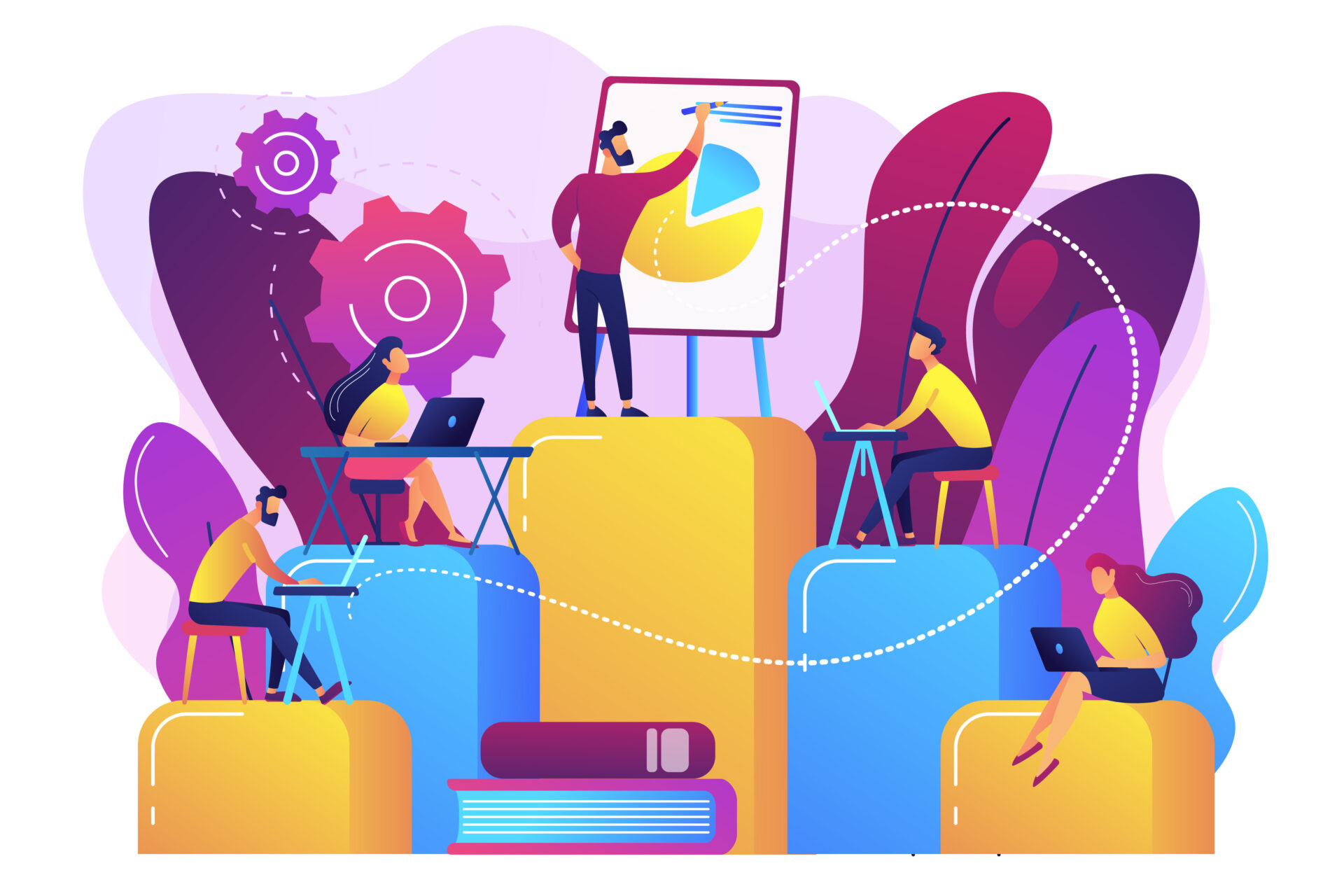It’s everyone’s favorite time of year — budget season! As many leaders are in the throes of planning for the start of a new fiscal year, budget requests will inevitably come alongside budget reductions.
By and large, learning and development should be a critical focus of any organization’s talent management and business success strategies — not only to retain, but also to recruit and engage the strongest employees in a highly competitive labor market. But in a time when so many companies and industries seem to be downsizing resources, how do we ensure our L&D strategies and offerings continue to effectively engage existing employees and attract new employees that strengthen our workforces?
L&D efforts do not have to be super flashy, extremely expensive or time-consuming to show your stakeholders you are invested in the personal and professional growth of your employees. Let’s look at some of the most cost-effective ways to invest in our talent.
We’ve all likely seen the conflicting news reports of the U.S. economy recently: It’s strong! It’s weakening! There’s a recession! Wait, unemployment is down! No, wait — hiring is lagging!
It’s hard enough making the business case for investment in L&D opportunities without a constantly conflicting news cycle of the economy and labor markets. Coupled with a workforce where both employees and employers are working to recover from both short- and long-term impacts of the pandemic, it may sometimes feel like the ultimate struggle to gain leadership buy-in and resource allocation to L&D initiatives. As more employees start to also look beyond traditional enticements to join and remain at organizations, such as pay and benefits, ensuring you have invested in a robust learning function for your workforce has never been more critical.
Access to ongoing skills development is particularly important for workers in the 18 – 24 age range, according to a 2021 Gallup survey.Workers in that age demographic ranked learning new skills as one of the most important benefits as they consider job opportunities.
Put the spotlight on learning
Making the connection to L&D investments in employees for potential job applicants before they ever apply for a role at your organization is an enticing way to help candidates see a long-term connection to the organization before their first day on the job.
Create testimonials from employees who have participated in training, reskilling or leadership development programs at your company, and highlight those on your career website (internally and externally). Host regular webinars and in person events showcasing your L&D options to current employees — many may not even be aware of their options to engage in upskilling and reskilling sessions!
Include relevant data for both employees and leaders to demonstrate a tangible ROI for L&D offerings, not only tying outcomes to improved job performance and productivity but also to employee experience and attitudes around how the training opportunities impacted their levels of engagement, satisfaction, and long-term outlook of remaining at the organization.
As a learning leader, it’s important to remember that not every employee wants to be a people leader, and not every employee wants to go through targeted leadership development programs. I often speak with talent management professionals who have incredible leadership development programs at their workplaces, but that is the primary focus of their L&D. This leaves out many employees who would enjoy upskilling/reskilling, or participating in learning that gives them more opportunity to move laterally, or feel like they are better prepared as a job seeker in the unfortunate event of downsizing or layoffs.
Even if your workforce is entirely in the office, make sure you offer a robust mix of in person, online, self-paced and synchronous learning opportunities that appeal to employees with different schedules and needs. While it may seem like a larger investment to have such a mix, this can help make a compelling ROI story to leaders if you can demonstrate scaling the information in a more traditional hour lunch and learn, to also using that information to create some micro-learning options that are skill specific, an online option with the content, and follow up sessions.
You don’t have to start from scratch for all of those. You can repurpose much of the lengthier training into multiple formats, appealing to a wider audience and gaining more participation over time with the variety of ways to engage.
You don’t have to break the bank
I worked for a small college in a rural area years ago as a senior HR generalist and Title IX coordinator. When I first took on my Title IX responsibilities, one of my main priorities was building an accessible and engaging learning experience around the critical Title IX content. We had few to no HR resources or budget for learning, but I was able to leverage the college’s existing LMS that faculty used to build an online course that could be completed asynchronously and could track completion. We then repurposed the content into smaller micro-learning options we sent out in newsletters and emails, as well as in-person training sessions.
While it may be nice to wish for the most cutting edge LMS, virtual reality or immersive learning experiences for employees, if budget is a concern there are always cost-effective and scalable options to invest in your workforce and get them engaged. LinkedIn Learning is an option that may work with your budget and appeal to your employees due to the wide variety of courses and articles available, as can Ted Talks. YouTube can also be a wealth of cost-effective resources for specific skills learning.
At a prior HR role, we had employees who wanted to get more comfortable with Excel and using data. We didn’t need to create hour-long courses or start from scratch, we leveraged some wonderfully engaging and concise YouTube videos on creating and filtering pivot tables, as one example, and built out 15-minute micro-learning sessions in which participants watched the video tutorial, received handouts on process application, and were given practice data sets to work with to learn the new skill. In just a couple of weeks, we had participants sending feedback that the one skill learned from those resources was saving them hours per week working with their data. Minimal cost, maximum ROI!
Don’t forget to knowledge-share
Utilize your networks and industry memberships — I cannot emphasize enough how many other L&D and HR professionals you may know who love to share their knowledge with others and can be a cost-effective support.
You may be surprised how many are willing to host a webinar, in-person session or even do a shorter skills tutorial for little to no cost to broaden their own networks and gain confidence presenting to new audiences! Finding ways to leverage any learning or presenter content to aid with multiple career pathways and mobility gains additional ROI when the content is applicable to multiple roles and employee groups.Setting up book clubs, article review or lessons learned sharing is another cost-effective way to share new skills and takeaways.Work within a train-the-trainer method — not everyone from a department needs to necessarily attend an upskilling training at full cost. Can you send one or two employees who can then train the rest of the team over time? Make sure anytime an employee is attending external conferences or training that a lesson learned/training share is built in with their team after the event as well.
You can still build a valuable experience
It can be intimidating if your L&D budget is getting reduced, or if you aren’t getting the additional investment funds you had hoped for. However, you can still build a robust and engaging L&D experience for your workforce using some of the many minimal-cost options that are out there, even when companies across all industries seem to be cutting costs more and more.
Employees want to know that their leaders and their companies are invested in them, just as they invest their valuable time and efforts to the success of the business. It doesn’t have to always be the newest, flashiest item to get their attention and show appreciation — it just needs to be engaging, meaningful (i.e., aligned to their specific needs) and show you genuinely care about their experience!
Whether you have a robust L&D portfolio currently but want to scale up to address new skills gaps, or you are building your L&D plan from scratch, don’t let cost get in the way of ensuring a valuable experience for employees.















